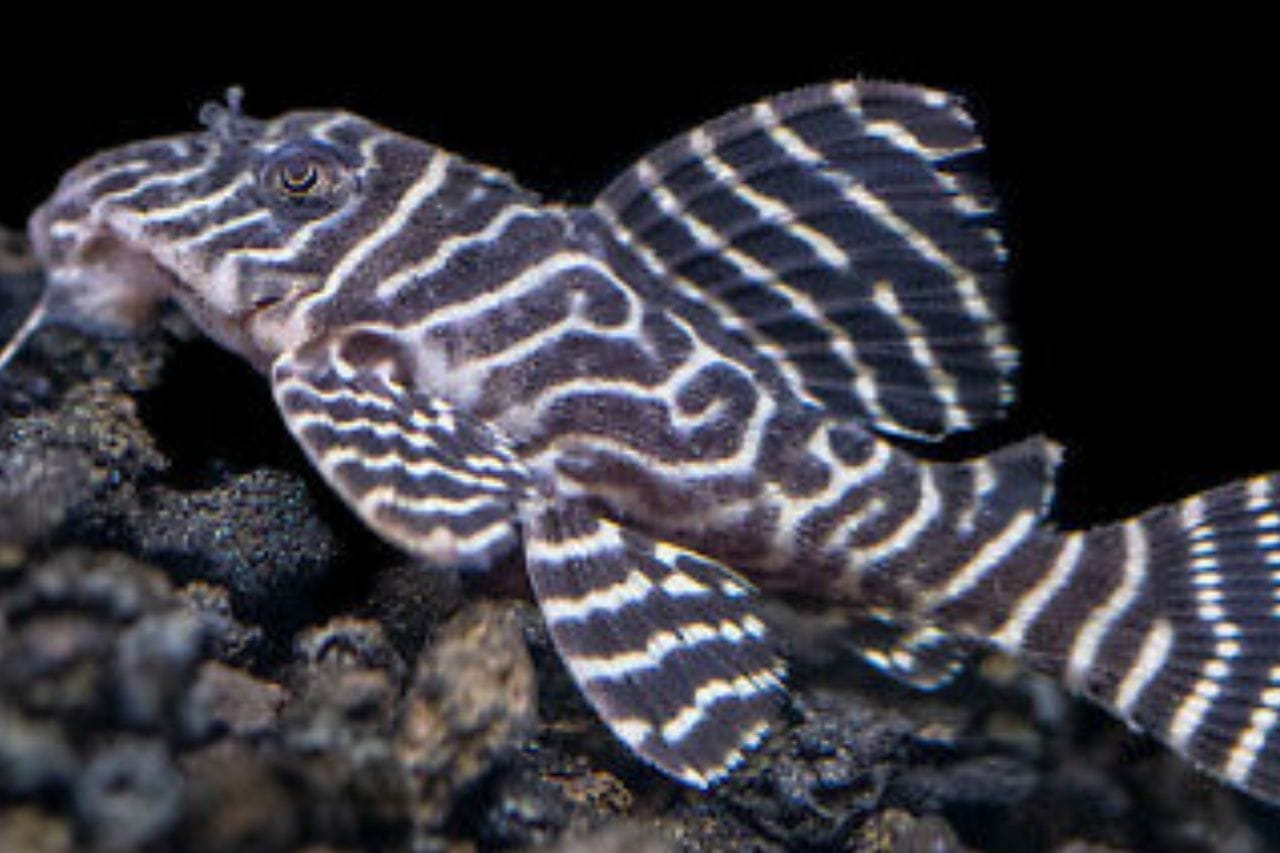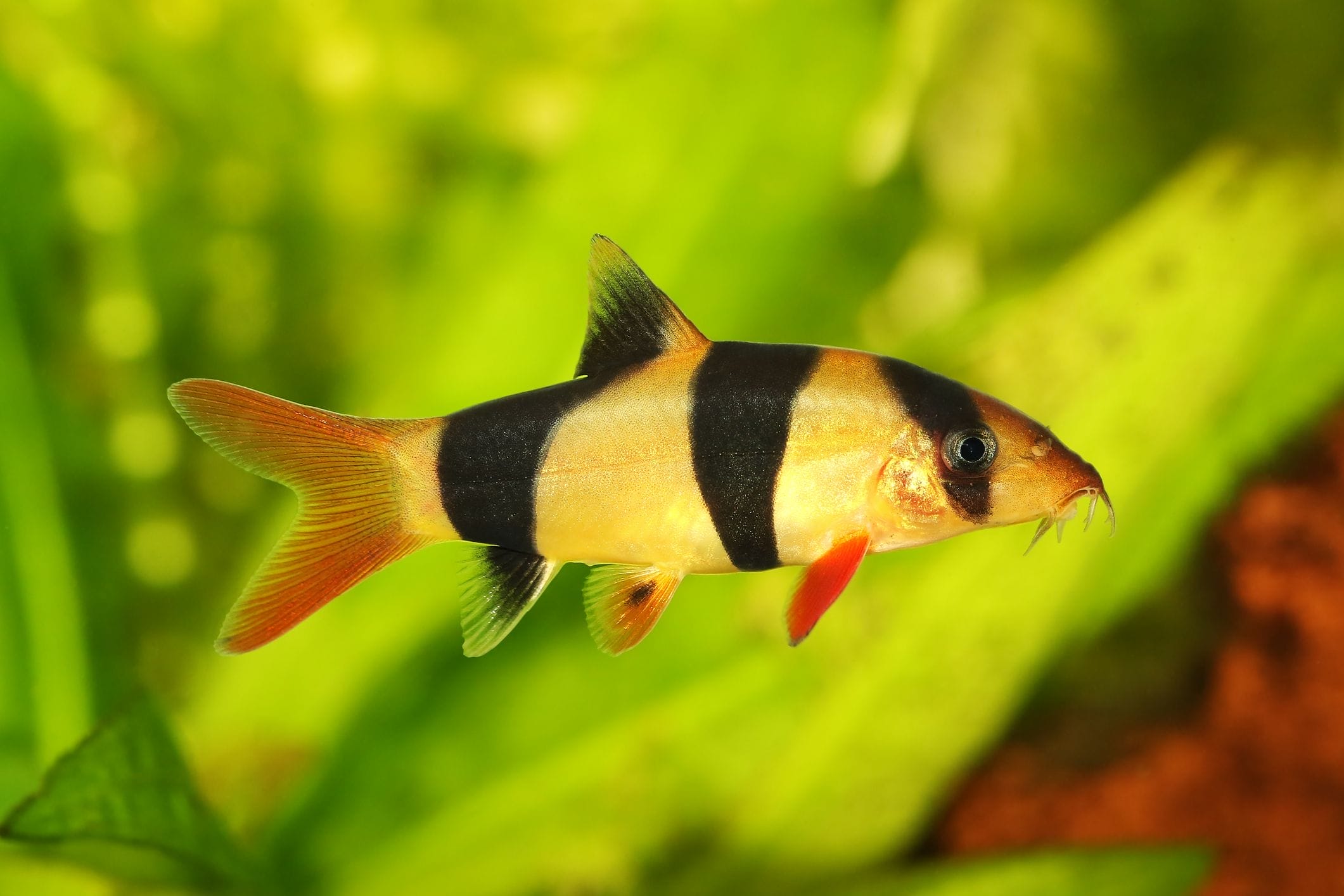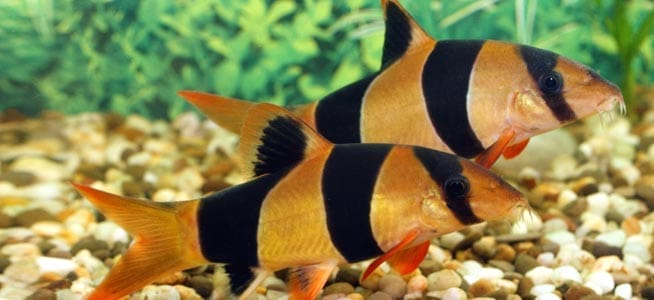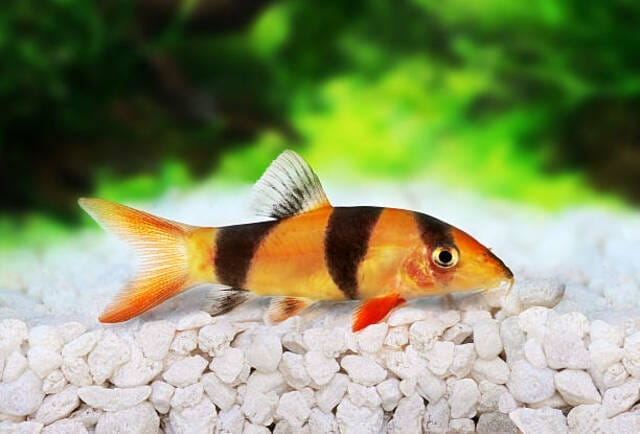
Explore the World of Clown Loach Fish

Welcome to the fascinating world of clown loach fish! These tropical freshwater fish are known for their vibrant colors, playful behavior, and unique markings. Whether you’re a seasoned aquarium enthusiast or a beginner looking to add some life to your tank, clown loaches are a great choice.
In this blog, we will dive deep into the world of clown loach fish, exploring their species description, native habitat, colors and patterns, size and lifespan, tank conditions, feeding habits, behavior and temperament, and suitable tank mates. Let’s explore the captivating world of clown loach fish together! Additionally, we will discuss the unique and mysterious behaviors of afer knife fish, exploring their nocturnal habits, movement patterns, and hunting techniques. Through this blog, we hope to provide a comprehensive and fascinating look into the world of these captivating underwater creatures. Join us as we unravel the mysteries of clown loach fish and afer knife fish!

Understanding Clown Loach
Clown loaches, scientifically referred to as chromobotia macracanthus, are a popular species of tropical freshwater fish that originated from the Indonesian islands of Borneo and Sumatra.
Their striking appearance and entertaining behavior make them highly sought after by aquarium enthusiasts worldwide. Clown loaches belong to the botiidae family, which includes other popular aquarium fish such as yoyo loaches and skunk loaches.
These fish can grow up to a foot in length and have a lifespan of up to 20 years with proper care. They are known for their playful nature, social behavior, and ability to thrive in community tanks with other peaceful species.
Clown loaches are also renowned for their unique coloration pattern, which consists of bright orange stripes on a dark blue or black background. Understanding the different aspects of clown loaches is essential for successful aquarium keeping and enjoyment of these beautiful creatures.
Species Description & Identification
Clown loaches are a popular species of fish among aquarium enthusiasts, thanks to their striking appearance and playful behavior. These fish are easy to recognize due to their vibrant colors and distinctive dorsal fin that runs along their back. They also have pairs of barbels near their mouth, which play a crucial role in their sensory perception.
The scientific name of clown loaches, chromobotia macracanthus, is derived from their stunning appearance. Their slender body shape and playful nature make them an excellent addition to any aquarium.
However, it’s important to note that these fish can grow up to 12 inches long, so they require a spacious tank with plenty of hiding spots. With proper care and attention, clown loaches can live for up to 20 years and provide endless hours of enjoyment for their owners.
Native Habitat of Clown Loach
Clown loaches are a type of fish that originate from the Indonesian islands of Borneo and Sumatra, where they live in flood plains and streams. Due to different water conditions in these regions, they are usually found in separate populations.
These fish thrive in tropical climates, particularly during the monsoon season, which mimics the rainy season. Clown loaches have a varied diet consisting of plant matter, tubifex worms, and invertebrates that can be found naturally in their habitat.
Understanding the natural habitat and diet of clown loaches is essential for maintaining their health and wellbeing in captivity. Providing an environment that mimics their natural habitat and feeding them a balanced diet will ensure that they remain healthy and happy.
Color and Pattern
One of the most striking features of clown loaches is their vibrant colors and unique patterns. These fish come in a wide variety of colors, including shades of orange, black, and white.
Their bodies are adorned with distinct black bands, adding to their interesting look. However, it’s important to note that the black pigmentation of clown loaches can be affected by the white spot disease, also known as ich.
This disease can cause their black markings to fade or become less prominent. Additionally, the dorsal fin of clown loaches displays black markings, further enhancing their visual appeal.
Size and Lifespan
Clown loaches are a type of fish that begin their lives as small juveniles, measuring only a few inches in length. However, with the right care and optimal tank conditions, they can grow up to a whopping 16 inches in size as adults.
They are known for being active fish that like to explore their surroundings, thus requiring adequate space in the tank. In captivity, clown loaches can live for more than ten years, providing long-term enjoyment for aquarium enthusiasts.
As they reach maturity, their vibrant colors and playful behavior become even more pronounced, making them delightful additions to any aquarium.
Colors and Markings
Clown loaches are known for their striking and vibrant colors, which range from bright oranges and yellows to sleek blacks and whites. Their bodies display bold stripes and spots that make them stand out.
These distinctive colors and markings can vary depending on environmental factors such as age, stress levels, and the quality of their habitat. Maintaining a healthy environment for these fish can enhance their unique coloration, which is essential for keeping them visually appealing in aquariums. Providing proper care for clown loaches will not only keep them healthy but also ensure that they continue to showcase their dazzling array of colors.

Ideal Tank Conditions for Clown Loach
Creating the ideal tank conditions for clown loaches is crucial to their health and well-being. These fish thrive in a community tank setting, where they can interact with other fish and explore their surroundings.
Maintaining proper water parameters is essential, including water temperature, pH levels, and water conditions. Additionally, providing the right tank size and essential equipment, such as filtration systems and appropriate tank decor, will help ensure the comfort and overall happiness of your clown loach fish.
Tank Size Requirements
Clown loaches are highly social fish that thrive in groups of at least 5 to 6 individuals. To ensure their comfort and well-being, a minimum tank size of 75 gallons is recommended. These active swimmers need plenty of open space to swim and explore, so it’s crucial to provide ample room in the tank. Additionally, hiding spots like rocks, caves, and plants should be incorporated into the environment to create a more natural setting.
Not only does an adequate tank size promote the health of clown loaches, but it also allows for the addition of compatible tank mates. By creating a harmonious community in your aquarium, you can enhance the overall experience and enjoyment of keeping fish. It’s important to note that clown loaches can live for up to 20 years with proper care, making them a long-term commitment for any aquarium enthusiast.
Water Parameters
Maintaining the proper water parameters is essential for the health and happiness of clown loach fish. These fish prefer a slightly acidic pH level in the range of 6.0 to 7.5. The ideal water temperature for clown loaches is between 75-86°F (24-30°C), replicating the tropical climate of their natural habitat.
It’s important to ensure good water quality by performing regular water changes, monitoring ammonia and nitrate levels, and providing adequate filtration and oxygenation for your aquarium.
Keep in mind that water conditions can vary depending on the specific needs of the fish in your tank, so it’s advisable to conduct research or seek guidance from a knowledgeable aquarium professional.
Essential Tank Equipment and Decor
To create an optimal environment for clown loaches, certain tank equipment and decor are essential. Here are some key elements to consider:
- Filtration: A reliable filtration system is crucial to maintain clean water and remove debris, ensuring the well-being of your clown loaches.
- Aquarium size and structure: Choose a tank that provides enough space for clown loaches to swim freely, keeping in mind the recommended tank size for a group of clown loaches.
- Sandy substrate: Clown loaches prefer sandy substrate, as it resembles the substrate in their natural habitat, facilitating their burrowing behavior.
- Plants and hiding spots: Adding live plants, such as java moss and riccia fluitans, can provide natural hiding spots and contribute to the overall aesthetics of the tank. Additionally, plants create a sense of security for the fish.
- Rocks and caves: Incorporate rocks and caves to create additional hiding places and mimic the natural habitat of clown loaches, giving them areas to retreat and explore.
- Remember, the key is to create an environment that closely resembles the natural habitat of clown loaches, including features that cater to their specific needs for swimming, burrowing, and hiding.
Disease Prevention and Treatment
Preventing diseases and maintaining the health of your clown loach fish is crucial for their well-being. Here are some disease prevention measures to consider:
- Quarantine new fish: Before introducing new fish to the tank, it’s essential to quarantine them to prevent the spread of diseases.
- Maintain good water quality: Regular water changes, proper filtration, and monitoring of water parameters are vital for disease prevention.
- Recognize common diseases: Be aware of common clown loach diseases, such as white spot disease (ich) and velvet, and monitor your fish for any signs of illness.
- Prompt treatment: If you notice any signs of disease, it’s important to act promptly. Treat affected fish with appropriate medications, following the dosage instructions carefully.
- Seek professional advice: If you encounter serious health issues with your clown loaches, consider consulting with a veterinarian specialized in fish health for expert guidance and treatment recommendations.
- By following these disease prevention measures, you can help ensure the long-term health and well-being of your clown loach fish.
Handling and Interaction
Clown loaches are generally active, playful fish that thrive in groups, so it’s essential to handle and interact with them properly. Here are some guidelines:
- Group setting: Keep clown loaches in a group of at least 5 to 6 individuals, as they are social fish that prefer the company of their own kind.
- Gentle handling: When handling clown loaches, it’s crucial to be gentle and avoid using nets or other tools that could potentially injure them.
- Observe normal behavior: It’s important to familiarize yourself with the normal behavior of clown loaches, such as their playful nature, swimming patterns, and feeding habits. This will help you identify any changes in behavior that may indicate stress or illness.
- Interactive feeding: Interact with your clown loaches through food, as they are known to respond positively to feeding time. Take the opportunity to observe their unique behavior and build a strong bond with them.
- Avoid overcrowding: Clown loaches can become stressed and aggressive in overcrowded conditions, so it’s crucial to provide adequate tank size and choose compatible tank mates.
- By following these guidelines, you can ensure a positive and enriching experience while handling and interacting with your clown loach fish.
Feeding the Clown Loach
Clown loaches are omnivorous fish that enjoy a varied diet. Here are some staple foods for clown loaches:
- Tubifex worms: These small, wriggling worms are a favorite of clown loaches. They provide essential protein and nutrients.
- Algae wafers: Specially formulated algae wafers provide clown loaches with plant matter, essential carbohydrates, and fiber.
- Shrimp pellets: These sinking pellets, made from shrimp, fish, and other ingredients, offer a balanced diet for clown loaches.
- Plant matter: Including plant matter, such as blanched vegetables like spinach or zucchini, in their diet helps mimic their natural feeding behavior.
- It’s important to feed clown loaches once or twice a day, ensuring they are receiving the proper nutrition without overfeeding, which can lead to health issues such as fatty liver disease. Monitor their eating habits and adjust the feeding routine accordingly to maintain a healthy diet for your clown loach fish.
Clown Loach Behavior and Temperament
Clown loaches are active, playful fish that thrive in a community tank setting. Their playful behavior, such as darting in and out of caves, digging in the substrate, and chasing each other, adds excitement to the aquarium.
They also exhibit interesting behavior, such as playing dead and swimming upside down when stressed or frightened. It’s important to provide plenty of open space and hiding spots, allowing clown loaches to explore and engage in their natural behaviors.
Keeping clown loaches in a community tank with other peaceful fish can create a harmonious environment, but it’s crucial to avoid aggressive or territorial tank mates that may stress or harm the clown loaches.
By observing and understanding the normal behavior of clown loaches, you can create a suitable environment that allows them to thrive and display their natural behavior.
Selecting Suitable Tank Mates for Clown Loach
When choosing tank mates for clown loaches, it’s important to consider their social nature and compatibility. Here are some suitable tank mates for clown loaches:
- Peaceful community fish: Select peaceful fish that are compatible with clown loaches in terms of size, behavior, and water parameters. Examples include tetras, rasboras, catfish, loaches, gouramis, and barbs.
- South American cichlids: Certain South American cichlids, such as angelfish and discus, can coexist with clown loaches in larger aquariums with ample hiding places.
- Small bottom-dwelling fish: Fish that inhabit the bottom of the tank, such as corydoras catfish, make suitable tank mates for clown loaches, as they occupy different levels of the aquarium.
- Smaller fish: Avoid keeping very small fish, as clown loaches may mistake them for food. Opt for fish of comparable size or larger to ensure the safety of all tank inhabitants.
- Freshwater invertebrates: Some freshwater snails, shrimps, and crayfish species can thrive with clown loaches, adding variety and interest to the aquarium.
- Always do thorough research on the specific fish species’ requirements and behavior before introducing them as tank mates for your clown loach fish. This will help ensure a peaceful and harmonious community in your freshwater aquarium.
Colors and Markings
Clown loaches are well-known for their striking colors and markings, which make them a popular choice among aquarium enthusiasts. Their bright and vibrant colors, ranging from shades of orange, yellow, black, and white, add a gorgeous touch to any aquarium.
These fish also have unique black bands that add an interesting contrast to their colorful bodies. Depending on various factors like age, environment, and breeding, the colors and markings of clown loaches can vary.
Over time, breeders have selectively bred clown loaches to display a diverse range of colors and patterns, resulting in each fish having its own distinct appearance.
The most common color variations include solid orange or yellow with black stripes or spots. However, some clown loaches may display more complex patterns such as checkerboard-like markings or speckled patterns.
It is fascinating to observe how these fish’s colors and markings evolve over time in response to changes in their environment. Overall, the stunning colors and unique markings of clown loaches make them a great addition to any aquarium.

Conclusion
To conclude, the Clown Loach is a fascinating and beautiful fish that can make a great addition to your aquarium. Its vibrant colors, unique markings, and playful behavior will surely captivate any fish enthusiast.
However, it is important to provide the ideal tank conditions and proper care to ensure the health and well-being of these lovable creatures. From selecting the right tank size and water parameters to providing essential equipment and decor, every aspect should be taken into consideration.
Additionally, being mindful of disease prevention, proper handling, and suitable tank mates is crucial for the overall happiness and longevity of your Clown Loach. With the right knowledge and care, you can create a thriving environment for these delightful fish and enjoy their beauty for years to come.





